Iceland: How much things cost & how to visit on a low budget
Since its currency crash in 2008, Iceland had gone from absurdly expensive to somewhat reasonable in cost, and that has prompted thousands of new tourists to stream in to see what all the fuss is about. It’s hard to find a visitor to Iceland who didn’t absolutely love the place, but you won’t find anyone who tells you it’s cheap, so planning ahead is essential. Prices have continued to creep up in 2015 and 2016, so it’s again among the most expensive European destinations.
Many visitors arrive on an Iceland stopover going between North America and Europe, but with very cheap flights to and from Europe it’s becoming popular for adventurous types from all over the continent. In 2013 I spent 9 days in the country, always checking for prices and the cheapest ways of doing things, so below I can lay out how to budget and what to do to keep costs down.
Note: This article was first written in late 2013, but all prices have been updated as of December 2016 to be current through 2017.
Reykjavik vs. the rest of Iceland: Where to go
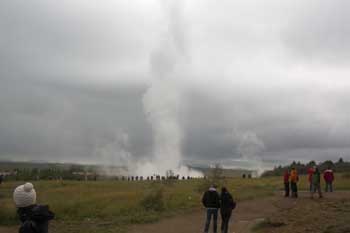
If you have one night or a few nights you are better off taking a bus or renting a car directly from the airport and heading east along the southern coast for some of the country’s best sights. If you have at least a week you’ll want to rent a car and do a lap around Iceland’s famous Ring Road, allowing you to see nearly everything the country has to offer in a neat and organized way.
Iceland accommodation: Hostels, guesthouses, and hotels
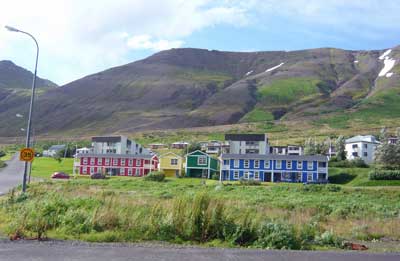
The most common form of accommodation in Iceland is a guesthouse and hostel combination which will have a mix of private rooms and dorm rooms, with shared bathrooms in down the hall. Most of them have fully equipped shared kitchens, so self-catering is at least as popular as eating out while exploring Iceland outside of Reykjavik.
High season (June through August) typical accommodation prices
All prices quoted in US dollars at a rate of about 110 Krona to US$1 in December, 2016.
- Hostel dorm bed: US$34 to US$58
- Single private with shared bathroom: US$85 to US$135
- Double private with shared bathroom: US$118 to US$140
- Double private with en-suite: US$130 to US$320 (and up)
Prices in Reykjavik are a bit higher than elsewhere in the country, but not by much. Prices in the off season are about 30% lower than in high season, but in the slowest months many places close so rates never go much lower than this.
Most Iceland guesthouses are NOT on the normal hotel-booking sites
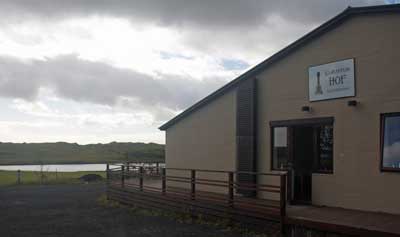
The good news is that when you get to Iceland, the tourism office will give you a directory of almost every guesthouse on the island, and there are other ways of finding these guesthouses and other informal accommodations. Even as of late 2016 you should be able to book a double room (with shared bathroom) for about US$120 per night in most towns in Iceland. If you do a hotel search you might see prices that are double that, but those are in the few formal hotels with 24-hour lobbies and such.
Increasingly, Airbnb and other online rental sites are the best place to find guesthouse accommodation in Iceland. As of only a few years ago, most places would be booked by phone or in person on arrival day, but now more and more places can be pre-booked, at reasonable prices.
Sleeping bag accommodation in Iceland
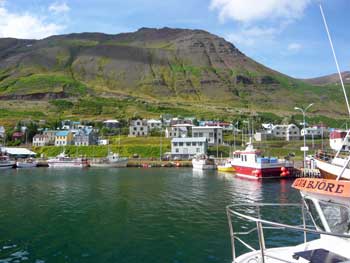
In a ‘sleeping bag accommodation’ (as it’s known in Iceland) you’ll get a bed with a mattress and often a pillow. So with even a cheap indoor sleeping bag, you’ll be comfortable and warm while saving quite a bit of money. For those renting cars, this is a highly recommended strategy.
You can rent sleeping bags in Reykjavik starting at around €12 per week.
Most Iceland attractions are free (the good news)
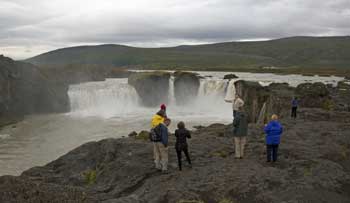
So to see all the glaciers and waterfalls and volcanic beds and other scenic attractions, it’s all free of charge with no admission cost or even parking fees. The larger attractions also have visitor centers where you can get local advice for free as well.
Iceland transportation: Rental cars and buses
Even as a lifetime public transportation fan, I’m very glad I gave in and rented a car to tour Iceland, even as a solo traveler. For the most part the roads are in perfect condition and virtually empty even in high season, so driving couldn’t be easier. Also, the country has stunning vistas every time you turn a corner, so being able to stop in the middle of the road even if there is no room to pullover, is critical.
The buses are modern but also expensive and running on very limited schedules. If you only have enough time to cover the main sights along the southern coast you might buy one of the bus passports that allows you to hop on and hop off, though a rental car is still much better and easier.
Rental cars in Iceland: What you need to know
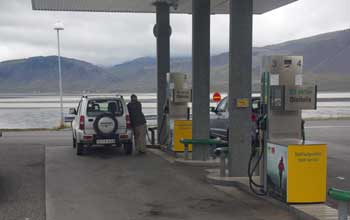
For an extra fee you can pay to reduce that deductible to almost nothing, but the more popular add-on is the Gravel and Glass insurance. For around €10 per day with this coverage you have a zero deductible if the vehicle gets damaged by gravel or if any glass gets broken by flying rocks (or anything else). Unfortunately, many of Iceland’s side roads and even a few of the main roads are covered in gravel, and if you drive at anything above a crawl, there will be some gravel flying around.
Personally, I normally decline add-ons like this but in this case I bought the Gravel coverage after reading a few horror stories in online reviews. I didn’t get any damage that I’m aware of, but the peace of mind was worth a LOT when driving on isolated gravel roads so I wasn’t petrified that I was chewing up the paint job just trying to stay safe on the roads.
Rental cars in Iceland
- 2-wheel drive compact (manual): US$230 per week and up plus add-ons
- 2-wheel drive compact (automatic): US$270 per week and up plus add-ons
- 2-wheel drive mid-size: US$450 per week and up plus add-ons
- 4-wheel drive van or SUV (automatic): US$650 per week and up plus add-ons
Daily rates are about 20% as much as weekly rates, so 5, 6, or 7 days cost the same.
Add-ons
Gravel coverage: US$10/day
GPS (highly recommended): US$10/day
Additional collision waiver: US$10/day
Fuel prices in Iceland
Every gas station in the country has the same prices, which don’t seem to change much. As of December 2016, a liter of petrol is 194 Krona, which is about US$1.75 or €1.63, or about US$7.50 per gallon.
Bus pass prices in Iceland
For a quick day trip from the airport to some local sights you can spend as little as US$90 per person, but for the longer distance buses you’ll spend at least US$130 to US$250 depending on length of time in order to hop on and hop off.
A Ring Road passport will cost around US$400 per person, so for two people it’s no cheaper than renting a car, even after fuel is taken into account, and for 3 or 4 people it’s definitely cheaper renting a car.
Food prices in Iceland
Here’s the thing: sit-down restaurants in Iceland are very expensive by international standards, so there aren’t very many of them. Obviously Reykjavik has many restaurant choices but most smaller towns might have only a few at most. The good news for budget travelers is that fast-food options are more plentiful, and self-catering is even cheaper and easier.
Restaurant prices in Iceland
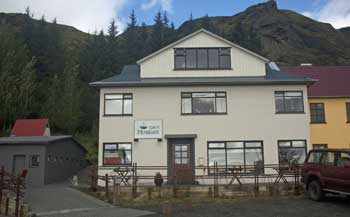
A soft drink, coffee, tea, or even bottled water will generally be between US$3 and US$5 in a restaurant. A pint of beer will typically start at around US$7 at even the cheapest places, while wine and spirits cost even more.
Fast food prices in Iceland
In Reykjavik and larger towns (which might only have 2,000 residents) you’ll have many fast food options including Subway, Quiznos, and usually a few local burger or hot dog places. Prices for a sandwich at Subway are about US$6 for a 6-inch and US$10 for a foot-long, so they aren’t too much higher than elsewhere in Europe, and are sure cheaper than proper restaurants.
More good news for drivers is that many gas stations around the country have fast food restaurants built in, so it’s fast and easy to pick up a sandwich or hot dog by the side of the road.
Hotel breakfast prices in Iceland
Many hotels and guesthouses in Iceland serve breakfast, but it’s almost always at an extra fee, and many don’t serve anything at all. If a breakfast is offered it will typically cost between US$12 and US$15 for a buffet of cereals, bread, cold cuts, cheeses, hard boiled eggs, juices, coffee and tea, and perhaps some pastries.
Making your own self-catering breakfast will be cheaper, but since you can stuff yourself for a flat fee at the breakfast buffets it might be worth it to save yourself the hassle of shopping the day before and making breakfast in the morning.
Self-catering in Iceland
The best budget tip for Iceland is to buy and prepare your own food, and you can literally do it for all three meals per day if you prefer. Since Iceland has almost no national “must-try” dishes, you can buy and prepare your own food without worry about missing anything meaningful.
Nearly every guesthouse in Iceland has a shared kitchen where at least half the guests will be storing and preparing breakfasts and even dinners. They have refrigerators, coffee makers, electric kettles, pots, pans, dishes, and silverware, as well as salt and other spices, so you can buy just the food and you’ll be able to prepare it all.
Supermarket prices in Iceland

For example, you can buy a 400 gram (1 pound) block of Havarti cheese for around US$5, but a similar looking cheese right next to it on the shelf might be US$15 for the same amount. The same is true for lunch meats. Sliced ham can be US$3 for enough to make 2 sandwiches, but sliced roast beef might be US$10 for the same amount.
Some sample prices in the cheaper Iceland supermarkets
- Sliced white bread: US$1.70 per large loaf
- Fresh baguette: US$1.50 to US$2 each
- Hot dog buns: US$2.50 for 5
- Pork hot dogs: US$3.50 for 5 large hot dogs
- Cheap Havarti or other local cheese: US$5 for 400 grams (1 pound)
- Imported cheese: US$10 to 15 for 400 grams (1 pound)
- Sliced ham for sandwiches: US$5 for 400 grams (1 pound)
- Sliced roast beef for sandwiches: US$12 for 400 grams (1 pound)
- Pasta: US$1.50 for .5 kilogram (1.1 pounds)
- Pasta sauce: US$3 for a .5 liter jar
- Ground beef: US$5 for .25 kilos (half pound)
- Bake-at-home pizza: US$5 to US$7 for one person
- Bag of tortilla chips for 2 or 3 people: US$2
- Jar of salsa for those chips: US$3
- Breakfast cereal: US$3 to US$5 per box
The prices above are for many of the cheaper and more common things that budget tourists buy in Iceland. As mentioned above, if you want something exotic and imported, it might cost double or triple what you pay at home, if you can find it at all.
Alcohol prices in Iceland
In restaurants and bars throughout the country you’ll pay at least US$8 for a pint of beer, and at least US$10 for a glass of wine or a simple cocktail. If it’s a fancy place you’ll pay even more, of course.
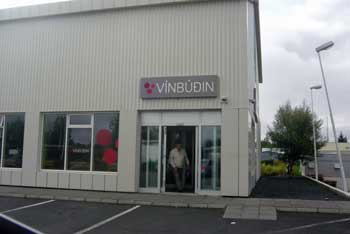
Here are some typical prices for alcohol:
- 330ml can of local beer: US$2 to US$3
- 500ml can of local beer: US$2.50 to US$4
- Cheapest bottle of wine: US$10 to US$12
- .7L bottle of off-brand vodka: US$30
- .7L bottle of mid-level brand vodka: US$50
Bottom line on doing Iceland as cheaply as possible
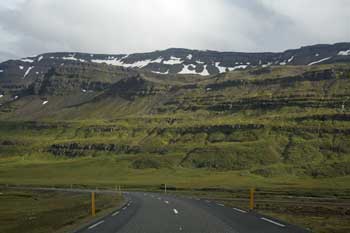
Whether you are going to get dorm beds or private rooms, as long as you will have your own wheels it’s worth renting a sleeping bag. You get the same bed and same services for about US$10 less per night, which will pay for a week’s rental of an indoor sleeping bag.
Unless you are a terrible driver or afraid to drive, it’s highly recommended to rent a car instead of trying to get around using buses. Once you get there you’ll see that having 100% flexibility with a car compared to almost no flexibility with a bus, is worth a LOT.
Instead of trying to be cheap with transportation, be cheap with self catering food and drinks for yourself. If you have at least a small group of people you’ll be able to have a party each evening in or near the shared kitchen of your guesthouse, and it will be more lively than any restaurant in town.

Thanks for that Roger. Enjoy your next trip too!
Roger your website is brilliant! Am going for a three night trip early June. How easy is it to use Visa Debit and MasterCard Credit cards? I don’t want to take too much Icelandic cash.
Thanks in anticipation.
Sue
Sue,
Thanks. And you’ll be in luck with this because Iceland (like all other northern European countries) is nearly cashless. In other words, the locals use cards for pretty much everything, and so can you (assuming your cards work internationally like they should). Have a great trip. -Roger
Hello Mr. Wade;
I’m planning a trip to Iceland in July. I do plan to staying in the sleeping bag accommodations. I do plan to rent a car as well. I was just wondering what a rough estimate of a week in Iceland would run me, not including food.
Jacques,
I’m happy to try to help, although I put most of the useful numbers in the article above, and I know prices have barely changed since then. July is a busy month and you might have to book those sleeping-bag accommodations at least a few days in advance, or run the risk of having to pay a higher price for a normal guest-house room. And rental cars are in high demand during July, so you might have to pay a higher price than people who rent in May or September.
The food can be a big variable depending on how willing you are to cook a bit for yourself and eat fast food the rest of the time, but it sounds like you’ve got that figured out. So really, the main costs will be accommodation (probably US$60 to US$80 per night for cheaper private rooms) and the rental car. Aside from that, most everything you’ll do (not counting food and drinks) will be free. In other words, all of the waterfalls and view points and national parks and hiking spots are free, except for the Blue Lagoon. Hopefully this helps, and feel free to ask a more specific question if you like. -Roger
Hello Roger,
My partner and I are planning a trip to Iceland for 2 weeks starting September 21, 2015. We would like to see the Western Fjords and do the Ring Road. We were thinking of 12 days of sightseeing on the road followed by 2 days in Reykjavik. As part of our cost efficiency planning, we are thinking of a camper van rental for the 12 days. I have several questions:
1) Will a camper van be okay travelling through the Western Fjords? I know it isn’t a 4X4.
2) Will 12 days be enough to do Western Fjords and Ring Road?
3) How are the petrol stations like around the Ring Road? Are they unmanned? And if so, will all credit/debit cards work (we are from Canada and use PIN cards).
4) At that time of year, would there be issues finding public washrooms or shower facilities?
J Yan,
I didn’t make it all the way to the western fjords, so I can’t offer much help with that part of Iceland. But I did the whole Ring Road so I’ll help where I can.
1) Before I rented my 2WD vehicle I had read the most of the roads that require 4WD are in the foothills of the volcano on the interior of the Ring Road. So my best guess is that most or all of it will be available to you. But I’d also guess that you’d need to travel on many unpaved roads in that corner of the island. Hopefully you can get a definitely answer somewhere else on that.
2) I think 12 days for the western fjords and Ring Road will be plenty. As I think I wrote in the article above, I did about 80% of the Ring Road in 4 days. It was a lot of driving time each day, but it was spectacular and I still had plenty of chances to pull over to see waterfalls and other sights, most of which are right off the Ring Road. So 7 or maybe 8 days on the Ring Road will allow you to move slowly, and I’d think that the remaining 4 or 5 days in the fjords would also be plenty.
3) All of the petrol stations I saw on the Ring Road were not only manned, but most had mini-markets and/or fast-food restaurants inside (which is very convenient because there are almost no other options in most areas). I paid with a debit card, and was able to use my normal password to do it myself, but in some cases I went inside to pay because I was buying something else. My rental car company gave me a little fob that gave a very small discount on petrol at two of the chain stations in Iceland, and I think I had to go inside to use it to get the discount. But it was a small discount (like US$0.02 per liter) and sometimes I went to other stations. As far as I could tell, all stations in Iceland have the same price for fuel, which is nice because nearly all of them are very remote.
4) The main tourism season is from June through August, but I believe that almost everything stays open through October or so, and they also get plenty of Northern Lights visitors in the winter months, so some facilities are open year round. In other words, I don’t think you’ll have trouble at all finding washrooms and showers in September. Many people are camping so I am confident that they have really good services available for that group, all year round.
Have a great trip. -Roger
Hi Roger,
Thanks for so much information. You are doing a great job.
I am traveling to Iceland with my wife. Arrival 19:00 2-Jun and Departure 01:15 7-Jun ( 4 full days). Will you please suggest me an itinerary so that we can utilize maximum time of our stay. We are fond of natural beauty like mountains, waterfall.
Vineet,
I’m happy to hear that people find this useful, and I enjoy helping people plan trips when I can. In your case you definitely won’t have enough time to do a lap around the Ring Road, but you’ll still have plenty of time to see all of the highlights along the southern coast, which is really the most impressive stretch anyway.
Hopefully you are prepared to rent a car because without one you’ll have to take the public buses, which go a limited number of places and also mean that you’ll always be in crowds. I almost never rent cars when I travel because I prefer public transport, but in Iceland I highly recommend doing it. You can get by well with a 2-wheel-drive vehicle. It will be most efficient to rent from the airport, even if you drive straight to Reykjavik for your first night. It’s about an hour away by road, with almost nothing interesting in between.
Reykjavik is honestly kind of a dud of a city for Europe, but still I think it’s worth going straight there for your first night once you arrive. In early June the sun doesn’t set until almost midnight, so even if you don’t get to Reykjavik until 9pm or 10pm, you’ll still be able to look around the city center and get dinner. You might want to spend part of the following morning there as well, and after that you’ll get on Highway 1 heading east.
What I’d recommend is driving on that day all the way to the town of Höfn, which would be about 5.5 hours away if you drove nonstop. Between Reykjavik and Höfn you’ll find literally dozens of excellent sights, including waterfalls, national parks, lagoons, volcanic fields, and things you just won’t believe until you see them. If you leave around 10am you’ll have time to stop at a few vista points and for lunch along the way, and then stay that night in Höfn. Since it’s light so late, you don’t need to rush.
After you wake up in Höfn, get back in the car and start slowly making your way west again, this time stopping everywhere that seems interesting. The best place to stop the next night is in the town of Vik, which is only about 3 hours from Höfn if you drove straight through. In other words, you’ll have 10 or 12 good hours to linger wherever you want, and only about 3 additional hours of driving that day. That will be a day that you’ll never forget. There’s no point in getting to these sleeping towns early because there is almost nothing to see or do in them. If you have a guesthouse or hotel reserved, you can just get there before dinner and then make it an early night.
After Vik, you’ll keep heading back toward Reykjavik, unless you want to see something else in the Vik area. It’s only about 3 hours of driving back to the airport, and you’ll have all of that day and the following day to do it. There are plenty of interesting things to see along the way, and when you get back in the greater Reykjavik area you’ll want to visit the 3 main things included in the “Golden Circle” tour, which includes the original Giyser, a huge set of waterfalls, and a lovely park that includes the Continental Divide. You could even stay in Vik that 4th night and still have plenty of time to see the Golden Circle attractions before returning your rental car to the airport around 9pm or so. Or you could stay in the outskirts of Reykjavik at a cheaper hotel with larger rooms and easier parking.
On your way to the airport, about 30 minutes before you get there, you’ll pass by a small road that leads to the world famous Blue Lagoon spa complex. It’s relatively expensive (about US$40 per person) to take a soak, but you can actually just take a look at it for free, and there are restaurants there as well. It’s by far the most popular thing in Iceland and it’s worth at least seeing it on your way to the airport.
So I highly recommend that first night in Reykjavik for a little look around. After that you could even stop the next night in Vik and in Höfn the following night and back in Vik the next night. That time of the year I’d highly recommend making hotel reservations, although even a few days in advance should be enough. Hopefully this helps, and let me know if you have more questions. You’ll see when you get there that pretty much every interesting sight is right off Highway 1, so it’s very easy. -Roger
Hi, we are going to Iceland late July, beginning of August with our 2 teenage children. We are going to hire a car and do the ring road over a couple of weeks. One of the questions asked, is there any where to get clothes washed as we are staying in hotels for the 2 weeks?
Dean,
Most of the accommodation in Iceland consists of guesthouses with common kitchens and often common entertainment rooms. I didn’t have to do laundry while I was there for 9 days, but based on the sorts of places I stayed in and noticed all along the way, I’m sure that many of them have a laundry room and perhaps even laundry service. There are also camp grounds and those will definitely have public laundry facilities.
So it’s probably wise to specifically ask about laundry when you are booking a place to stay on the day you’d like to get it done, but I’m quite sure that many if not most places will have machines you can use, probably for a small fee. There are some chain hotels in the larger towns as well, and those will also have guest laundry facilities of some kind, but those tend to charge MUCH more for it. I envy your long stay, and I’m sure you’ll have a wonderful trip. Feel free to ask any other questions if you have them. -Roger
Iceland has been my ultimate travel destination for ages but I’m still working on filling the budget bucket for now. Your article is so well written that it gives me the thrill just by reading it. I’m definitely going to be back for more info once the said bucket is filled, hopefully soon enough.
thanks for sharing
Hi Roger,
Thanks for all your helpful tips. I will be traveling to Iceland this mid to late August, so around the same time frame that you traveled. How far in advance did you book your car rental? I’ve been looking at several websites, but the prices are still astronomical. I know you’ve said you were happy you go the 2WD, but was there any part of you that regretted not getting a 4WD for places like Landmannalaugar or the “Green Mountain”?
Cuong,
I believe I booked my rental car only about a week before I arrived. When I was shopping around it appeared that there was no shortage of companies with cars available for my dates, since I was arriving for the last week of August, which is the last week of the high season. That was a year and a half ago, and Iceland seems to have much more buzz at the moment (along with lower prices due to the exchange rate), so things might be more expensive and booked sooner this summer. Still, the car rental industry is big in Iceland, and prices might come down as the date approaches when some agencies they realize they still have many cars.
As for the 2WD vs 4WD question, my goal was to do the Ring Road and also see the famous waterfalls and other attractions just off of the Ring Road. There was never a case where I wanted to go see something that required a 4WD, but that was partly because you don’t have time to see everything in a week on the Ring Road. So there was more than enough to see with a 2WD. I think if I’d planned 10 days or more then I would have had time to explore more of the interior of the island, and some of that is only accessible by 4WD. Good luck with whatever you decide. -Roger
Thank you for your many tips,,, My son and i are planning a 4day 3 night stop over in iceland in June. I have been trying to book most things ahead so it can all be paid for by the time we go. You are so right about the cost of the higher end hotels. I have a time share which i book through RCI and was able to utillize some of my points from it to save on the hotel cost, but even so it was still over 500. US for the three nights . I realize this may be a little expensive, but it does include buffet breakfast daily. We figure it may be the only time we get to see Iceland. My son and I have decided to center in Rekjavik, so any tips on the must see /and eatery places in the city center would be appreciated. Again Thanks for all your tips.
Rosemary,
You’ll have a wonderful time in Iceland, although again I’ll recommend to try to schedule as much time outside of Reykjavik as possible. It’s a fine small town, but Iceland is all about the nature and views.
The top attraction in Reykjavik is to go to the tall church just off the main downtown street, and ride the elevator up to the top for the city views. I took the City Sightseeing bus around the area and didn’t find it too interesting, to be honest. You can walk around the “historic” downtown area in only a few hours, and after that I’d focus on getting out and seeing the natural sights. As for restaurants and such, I think you’d find good information on Yelp or the internet in general. I was mostly experimenting with the budget food options, which are the smaller and fast-food oriented places. Iceland isn’t really known for its cuisine, so most of your choices will be the typical Italian places and that sort of thing. Food in proper sit-down restaurants is quite expensive.
Have a great trip and let me know if there is anything else I might help with. -Roger
Thanks Roger, We will make sure we take in some of the other sites, I love taking pictures so many different aspects of the island ‘s nature appeal to me, and i am looking forward to my trip.
Hi. Loads of great info..thanks. My daughter and I are going for 14 days in late April. We are travelling the Ring road in its entirety. Is it safe enough for us to go hiking ourselves or should we do some of the tours that are offered. Also, I’ve read about the whale watching tours etc. Is it worth the money and if so, where in Iceland would be the best tours for this. From what I’ve read on your site it seems the best way to go is northward from Reykjavik for the first part and then spend the majority of our time along the south and southwest. I’m not sure how many days we should stay in Reykjavik, there doesn’t seem to be a lot to see. Any feedback would be appreciated. Thank you! Joyce
Joyce,
If you are talking about safety in terms of people who might want to steal from you or harm you, I think Iceland might be among the safest countries on earth. The population is tiny and it’s a long way from everywhere, so there just aren’t many “bad apples” out there. I don’t think the police even have guns. But if you are talking about safety in terms of dangerous hiking conditions, I can’t really say. The tourist infrastructure in Iceland is very good, and I’d assume that most hiking trails are well signed and maintained, but if you went into the remote parts of the interior of the island, there might be some dangerous places.
I’ve heard that whale watching is offered out of Reykjavik, but it didn’t interest me much because I grew up in a place (Los Angeles area) where whale watching trips were part of everyone’s upbringing. If whales interest you, I’d guess that the trips are pretty good there.
Yes, I went north from Reykjavik and clockwise around the Ring Road, and I think it’s the best strategy because there is so much packed along the southern coast. In my case I pretty much went as quickly as I could most of the way around, but still stopping and seeing all the main highlights. Then I had the last 3 full days to explore the southern coast heading back to the airport, and that worked out really well.
I think if you have the time that spending one or two days in Reykjavik is worthwhile, but I still contend that 99% of the magic of Iceland is outside of the capital. The main city center is pretty modest and not very distinctive, and the outer areas are even more generic.
Have a great trip and feel free to ask other questions if you have them. -Roger